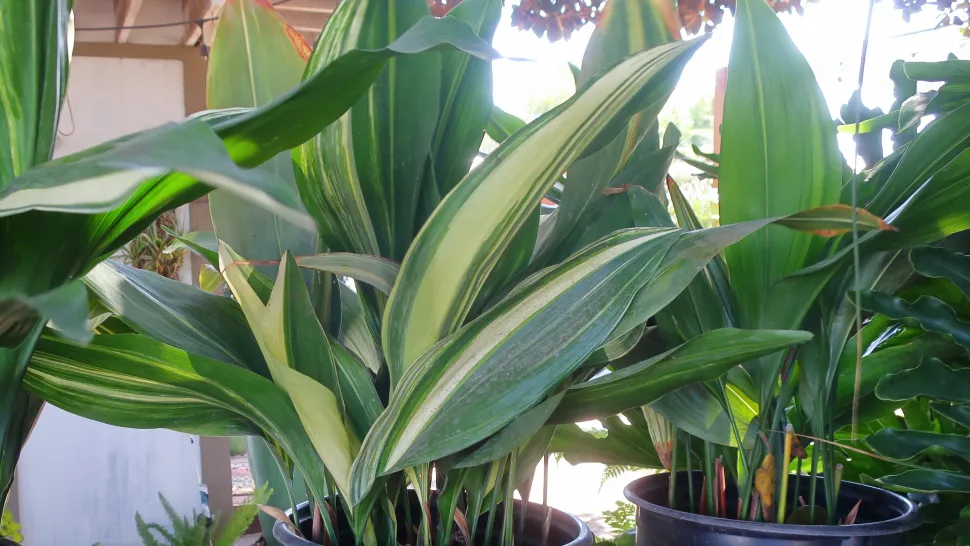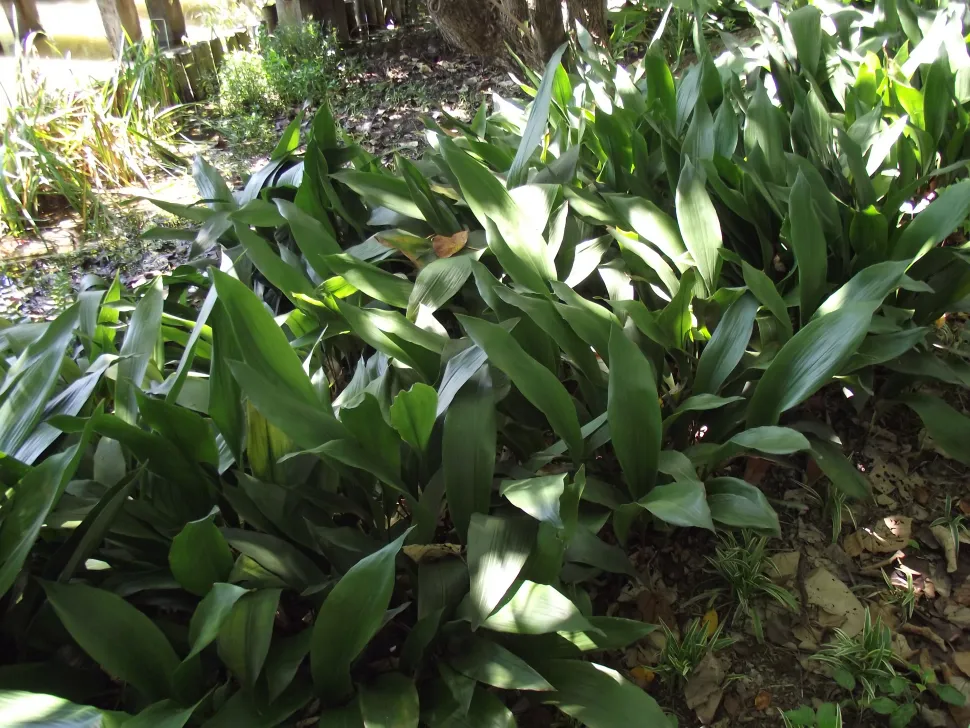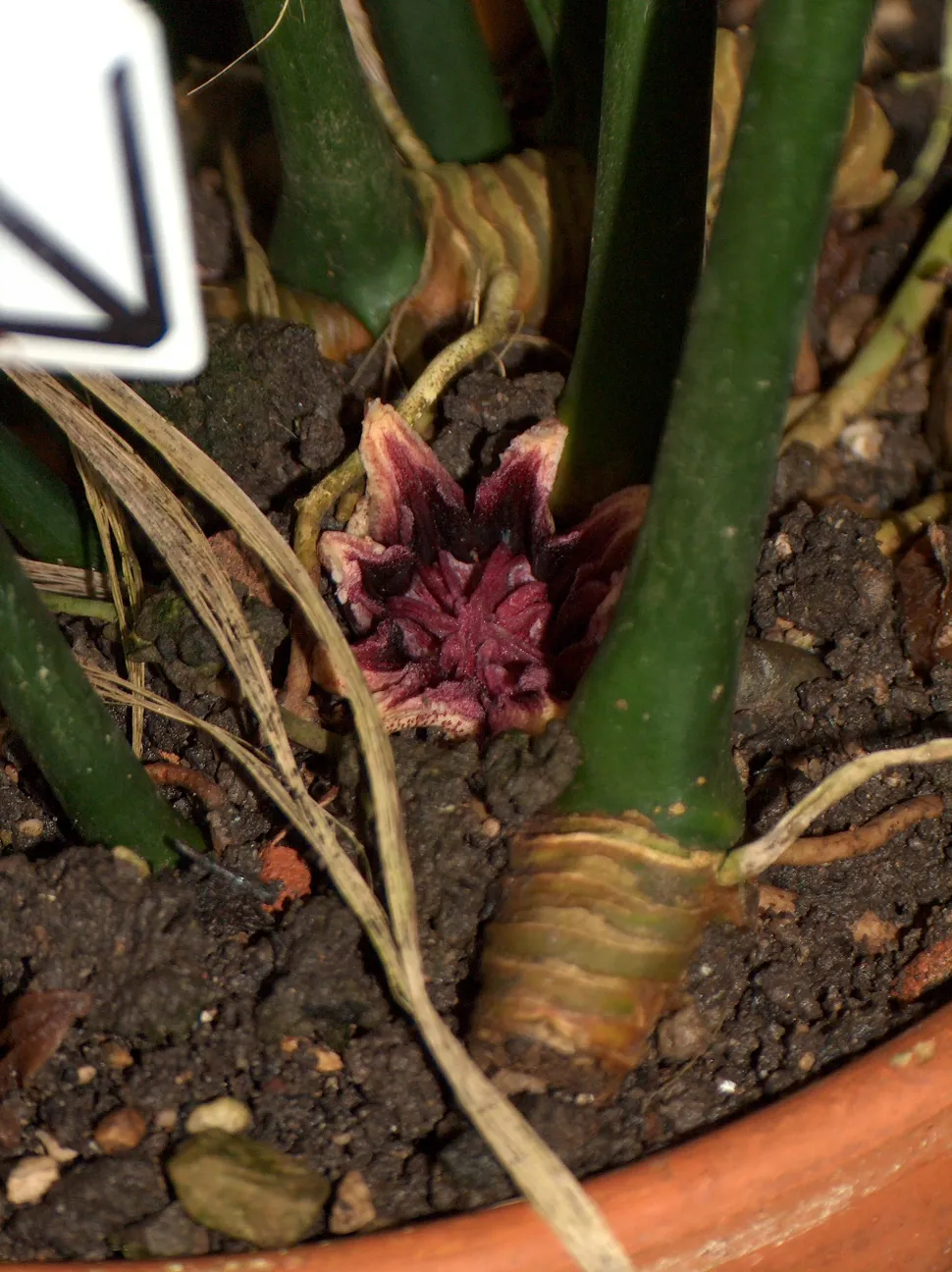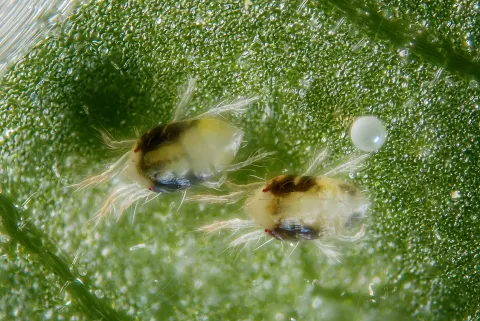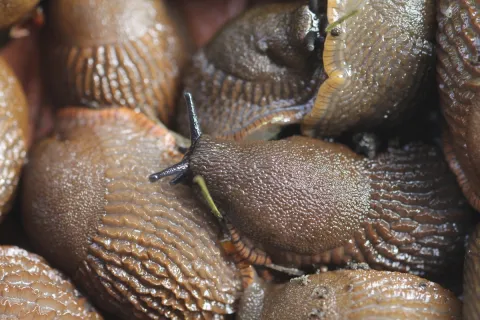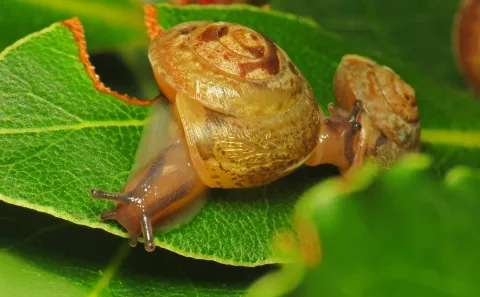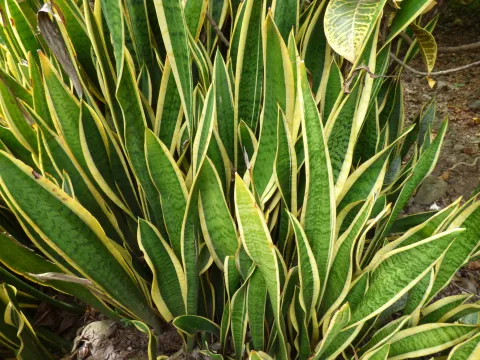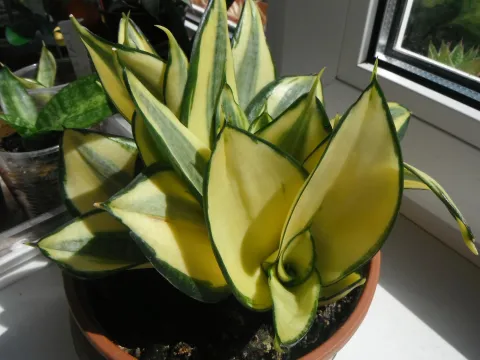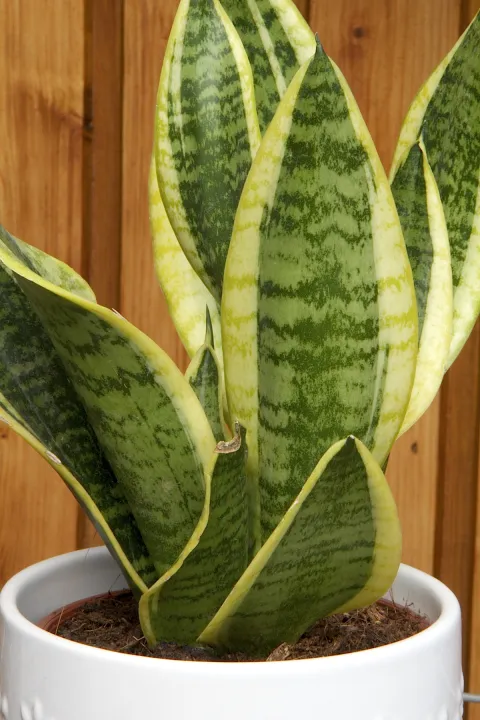Aspidistra elatior, vintage mother-in-law's tongue
Originally from the southern islands of Japan and Taiwan, Aspidistra elatior conquered European living rooms in the 19th century. A star of interiors in the 50s, the plant had become old-fashioned. But its hardiness and robustness have enabled it to make a comeback in our gardens and on our balconies. This perennial member of the Asparagaceae family can survive temperatures as low as -15°C!
How to recognize Aspidistra elatior?
Aspidistra elatior is an aculeate plant with a dense, bushy habit. It can reach 60 centimetres in height and the same width.
Aspidistra elatior can be recognized by its evergreen foliage. The leaves grow on a long, erect stalk. Light green when young, they turn a brilliant dark green as adults. The fleshy blades are 30 to 50 centimetres long and eight to ten centimetres wide. Because of their lanceolate shape, Aspidistra elatior is nicknamed mother-in-law's tongue, like sansevieria trifasciata 'Futura Simplex or sansevieria trifasciata 'Golden Hahnii.
Aspidistra elatior flowers bloom from January to April. They have eight triangular lobes, tapering at the tips. Cream and brown on the inside, they turn purple on the reverse. To admire the bloom, it's best to be observant: the flowers appear low to the ground, hidden under foliage or buried.
This mother-in-law's tongue is non-toxic to you and your pets. You can use it as ground cover in your garden or to add a retro touch to a dimly lit corner of your living room.
Care for your Aspidistra elatior
High Aspidistra are perfect plants for beginners, the faint-hearted and anyone without a green thumb. They need only a little water and light. But with the right care and a little attention, their foliage reveals all its beauty.
Watering
High Aspidistra like to keep soil moist, but not soggy. Water when the soil surface is dry (two to three centimetres).
Water the substrate with non-calcareous water, such as rainwater, at room temperature.
Allow the water to drain through the drainage holes before replacing the plant. Empty out any water stagnating in the saucer or planter. It may rot the roots.
Spray
Your High Aspidistre is a tropical plant. It appreciates a high degree of humidity. To please it, spray its foliage with non-calcareous water, such as rainwater or filtered water.
Fogging isn't just good for humidity. It also prevents pest attacks and cleans the leaves.
Repotting
In spring, transfer your Aspidistra elatior to a larger pot, so that it can continue to grow.
Obtain a pierced plastic or terracotta pot. Fill the bottom with clay balls or gravel to optimize drainage.
Your High Aspidistre appreciates rich, light soil, such as green potting soil enriched with perlite or sand. Pour in a layer of substrate, then plant your subject in the center. Fill in with the rest of the mixture and press down.
Water for the first time to eliminate air bubbles and encourage rooting.
Fertilization
You can stimulate the growth of your plant during its growth phase, in spring and summer, with fertilizer.
Apply green plant fertilizer in addition to watering.
Cleaning
Remove dust from foliage with a clean, damp cloth. This will enable your plant to take full advantage of the sunlight.
Prune
Cut back dry stems and wilted leaves. You can use a pair of scissors or pruning shears. Remember to clean them beforehand to prevent the spread of disease.
Plantation
Once the last spring frosts have passed, you can plant.
Choose a location sheltered from the wind. Allow 50 centimeters between high Aspidistre and other plants. Your plant will particularly appreciate the company of tall trees: their roots absorb water and leave well-drained soil.
Dig a hole two or three times as wide and deep as the root ball. You can add gravel or pozzolan to the bottom to promote drainage. Place a layer of garden soil and plant high Aspidistre in the middle.
Cover with soil, making sure to bury the root ball. Tamp down and water for the first time to eliminate air bubbles.
Cutting
Cutting is carried out during the strong growth phase, generally in spring and early summer.
High Aspidistra are rhizomatous plants. They multiply by clump division.
Take your High Aspidistre out of its pot. Using your hands or a clean, sharp tool, separate a shoot with at least four leaves and a rhizome. The more developed your young shoot, the greater your chances of a successful cutting.
Transplant or repot.
Cutting is carried out during the strong growth phase, generally in spring and early summer.
High Aspidistra are rhizomatous plants. They multiply by clump division.
Take your High Aspidistre out of its pot. Using your hands or a clean, sharp tool, separate a shoot with at least four leaves and a rhizome. The more developed your young shoot, the greater your chances of a successful cutting.
Select an aerial stem, then bury the new rosettes in a pot with sandy soil. You can use a wire or hairpin to secure it in the soil so that it doesn't move. But be careful! At this stage, the stems must not be separated from the mother plant!
When the roots reach two or three centimetres, cut off the stolon and repot the new plant.
Exposures
Substrates
Diseases / Threats
Information
| Family | Asparagaceae - Asparagaceae |
| Type | Aspidistra - Aspidistra |
| Species | High Aspidistre - Aspidistra elatior |
| Lifecycle | Perennial |
| Foliage | Evergreen |
| Categories | |
| Tags |
Beginner Increvable Rustic |
| Origin |
Southeast Asia |
| Hardiness (USDA) | 7b |
| Leaf color |
|
| Flower colors |
|
Discover plants from the same family

